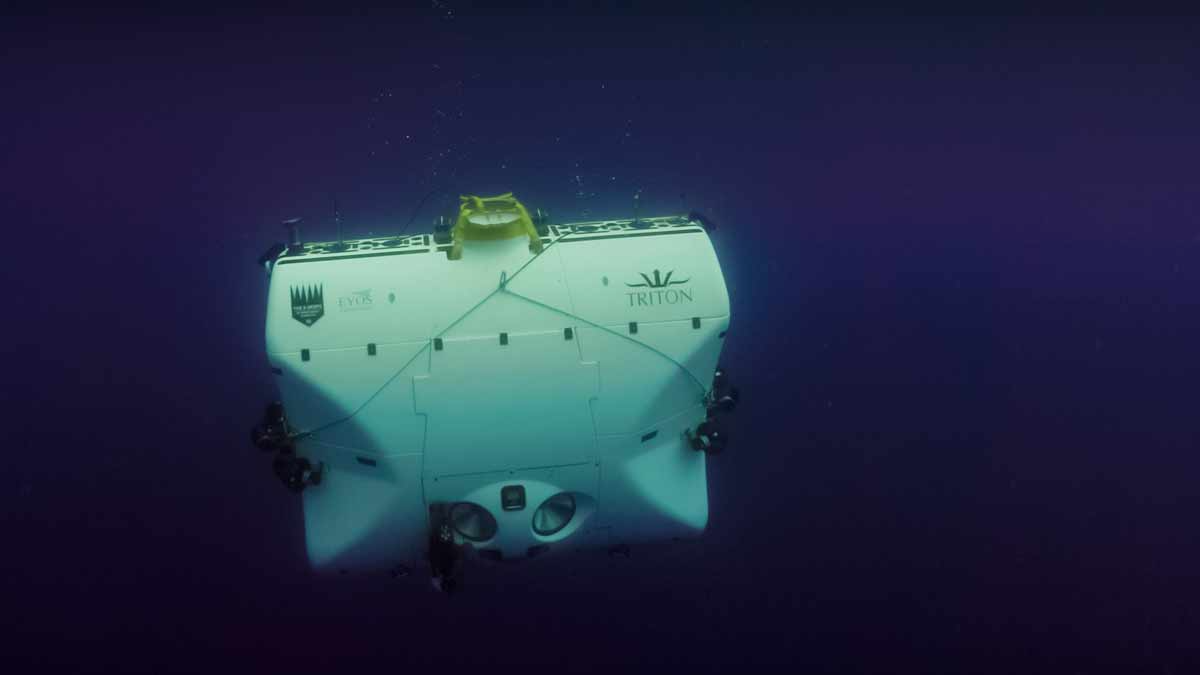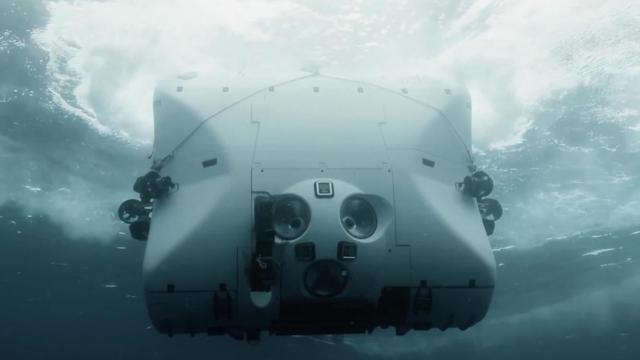You might have seen a story going around this week with the headline “The only manned submersible that could reach the missing Titan is owned by Steam’s Gabe Newell,” in reference to the leader of the world’s biggest PC gaming platform. This is true, in a purely hypothetical sense, but also kinda pointless since said submersible is nowhere near the Titan (or Titanic’s) location and couldn’t help in the rescue efforts even if it was.
That said, I still want to talk about Newell’s submarine (which isn’t really his, as though it was his personal ride, he just owns the company that operates the sub). While we don’t yet know what exactly has gone wrong with the Titan, videos rediscovered this week show that the vessel was, relative to the conditions it was supposed to be used in, alarmingly basic.
It’s easy to say this in hindsight now, but it’s incredible anyone ever got in that metal tube at all, let alone paid $US250,000 to try and get to the bottom of the ocean in it. Especially when you look at the Titan and compare it to the sub Newell’s company owns, which is called the DSV Bakunawa.
How did Valve’s Gabe Newell get a submarine, anyway?
Back in November 2022 Valve co-founder and owner Gabe Newell spent “an undisclosed sum” buying a bunch of stuff from billionaire explorer Victor Vescovo, who a few years earlier had funded the development of the Triton 36000/2, a submarine in which he completed the “Five Deeps” series of explorations, which saw him pilot the craft to the bottom of all five of the world’s oceans.

He didn’t purchase it personally; instead, the sub, its accompanying surface vessel and three robot landers (collectively known as the HES, or Hadal Exploration System) were bought for a company Newell owns called Inkfish, an oceanic exploration firm whose first mission is going to be taking a deep dive into the waters off the coast of Curaçao and performing research with academics from the US, Norway and Australia.
“What Mr Vescovo and his team have accomplished with the Hadal Exploration System is extraordinary,” Newell said at the time of the purchase on a website that has nothing to do with video games. “It represents a truly unique tool to the marine science community, and we hope to carry on its tradition of enabling critically important research into the deepest regions of the oceans.”
Anyway, enough history, let’s take a look at this submersible itself because I want to start talking about how cool this thing is. While most undersea vessels carry depth ratings designed to signify the extent of their intended safe operational use (the Titan’s, for example, is 3,962.40 m, or 4000 metres), the Bakunawa — formerly known as the Limiting Factor — has been rated “full ocean depth” because not only has it literally been to the bottom of the ocean, five times, it has been pressure tested for depths of 14,000m, which is 3000m deeper than the deepest point in the ocean, just to be safe.
Designed with exploration in mind, rather than billionaire tourism, the Bakunawa “affords scientists the opportunity to compare rich data-sets spanning the full gradients of depth, temperature, salinity and other factors.” With seating for the pilot and one other passenger, it was designed from the ground up as a vessel that would spend most of its time going up and down rather than forwards and backwards, hence its odd, bulbous shape.
It has a 65kWh battery, which is enough for 16+ hours of operation at a time, with a further 96 hours’ worth of emergency oxygen supply available. It’s also relatively easy to service and maintain, even in remote areas, with the Five Deeps team testifying that its “essential systems are designed with simplicity and reliability foremost of mind. Maintenance can be carried out at sea using standard tooling, while repairs can be carried out by skilled ships’ crew if required.”
The Valve president’s submarine is well-designed
Perhaps most importantly — again, given the Titan’s cavalier lack of safety certification — the Bakunawa’s builders, Triton, say “although the process is expensive, arduous and time-consuming, [international safety classification] is the best guarantee that a submersible has been developed thoughtfully, carefully and with engineering rigour,” and that after the completion of the sub’s fifth and final ocean descent in 2019, it could be “insured by standard maritime agents and should give peace of mind to any sub passengers that they will be as safe in their dives as on any other commercially-rated vessel.”
I know this is starting to sound like I’m rattling off the bullet points from a car brochure, but the important thing to remember here is that these aren’t abstract boasts, or spitball projections made by reckless techbros building what I’ve seen described this week as “The Juicero of the Sea”; this submersible has been put through it, passed with flying colours and is now ready to cruise the oceans helping us get a better look at the roughly 80% of the ocean floor we know nothing about.
Am I only posting this because it was bought by a video game billionaire, and has now been thrust into the spotlight by the Titan’s disappearance? Partly! But that piece of trivia is what got me looking into the sub, and I’ve now spent all day learning (and now writing) about this mostly because I just think it’s cool, in the same way I think a lot of weird vehicles are cool. It’s a highly-specialised piece of super advanced technology that’s allowing human beings to explore places we’ve never been, it’s doing it in ultra HD, and it’s doing it all for science. Like Seaquest DSV, but on a smaller budget.
If all this sub talk has you interested in seeing how the thing actually works (it’s going into space but in reverse, basically), this video (with Vescovo piloting) of a descent to Challenger Deep — the deepest point on the ocean floor — gives us a great look.

Leave a Reply